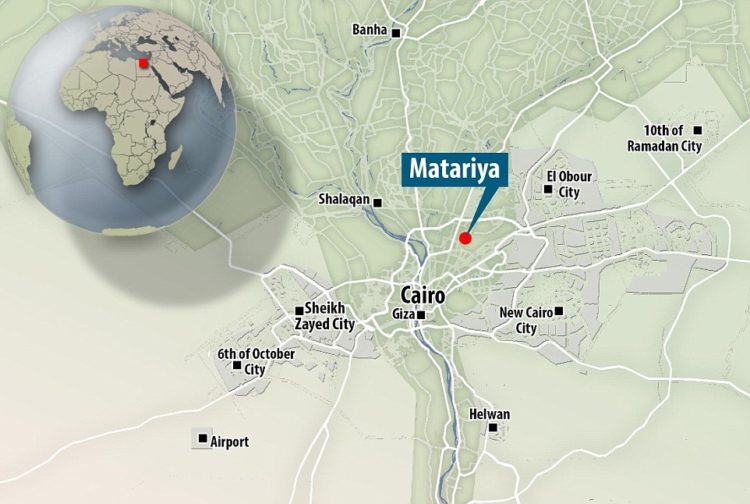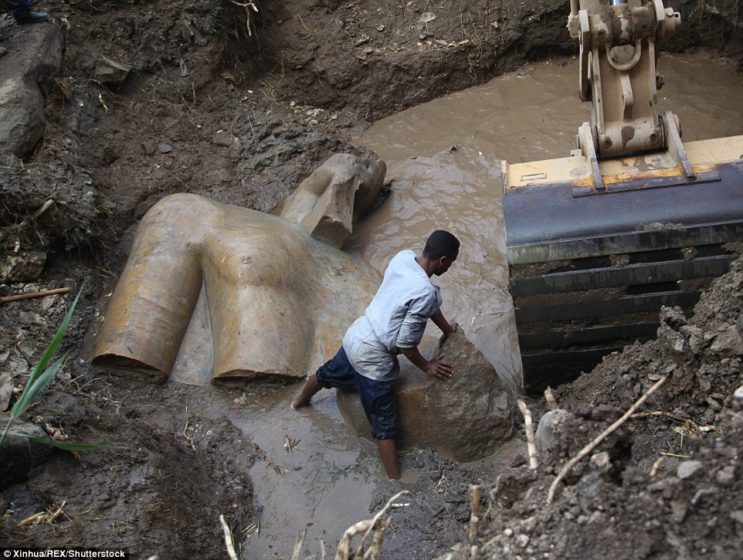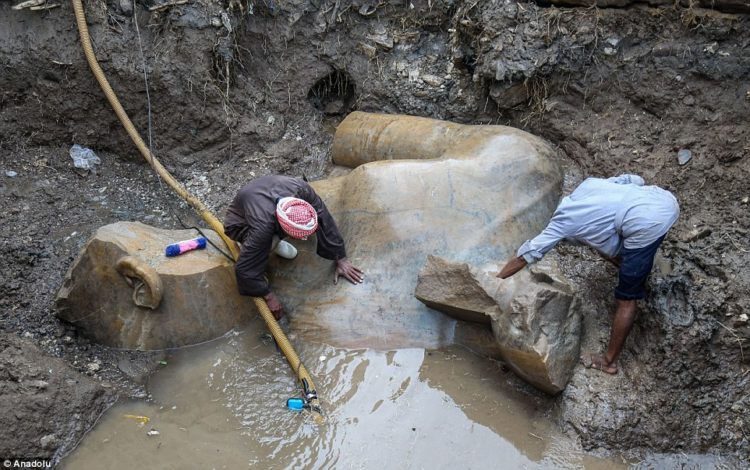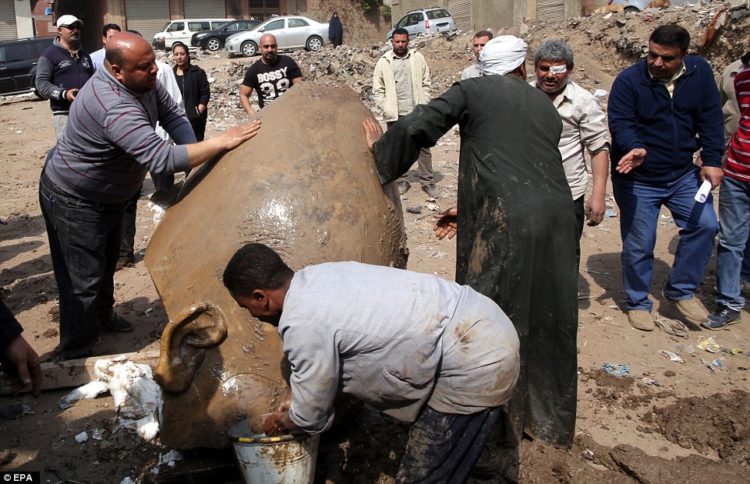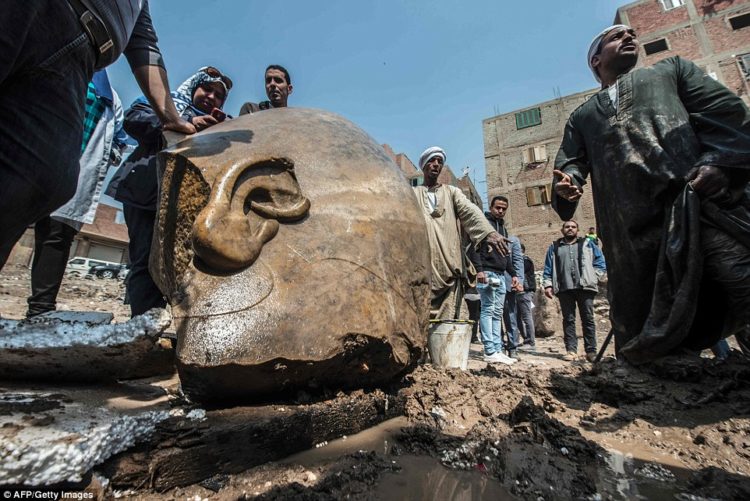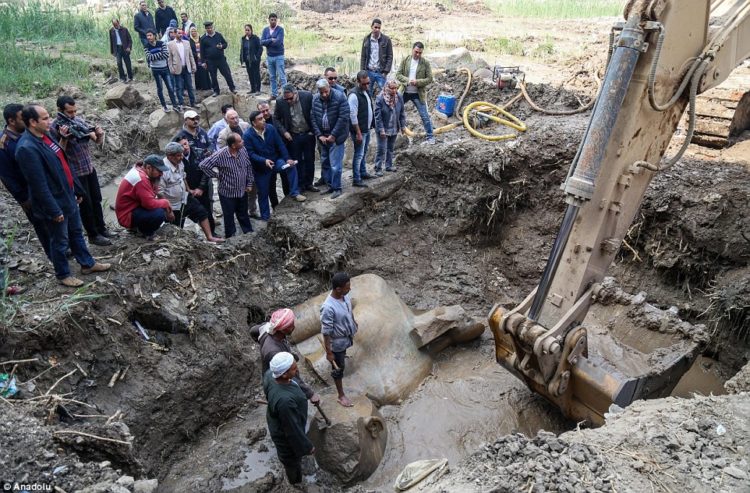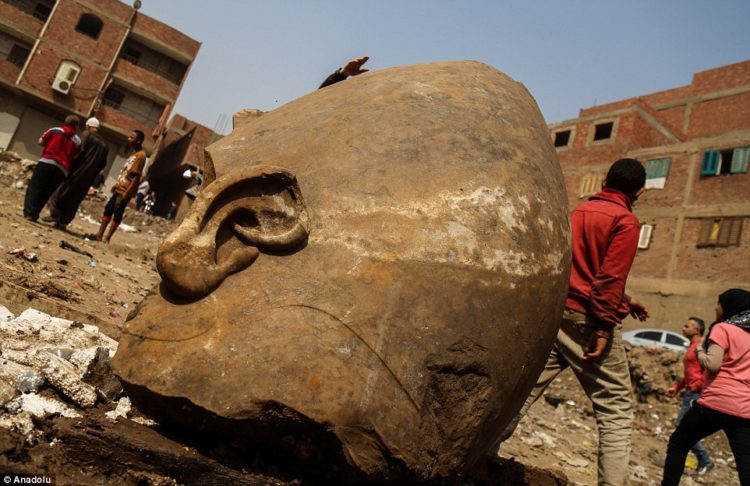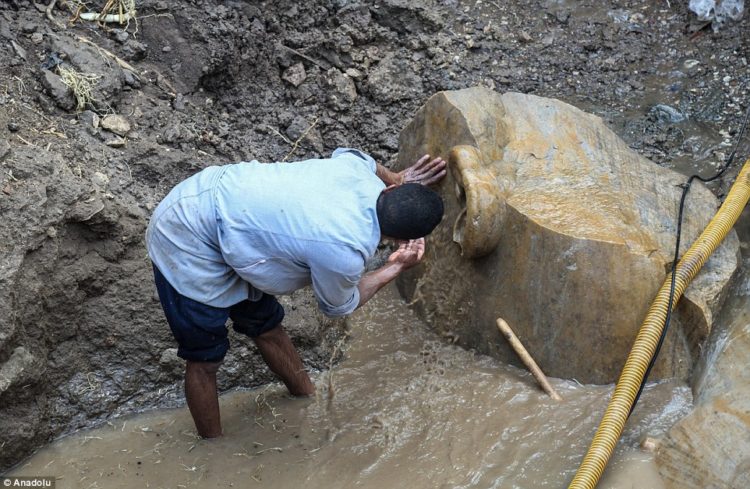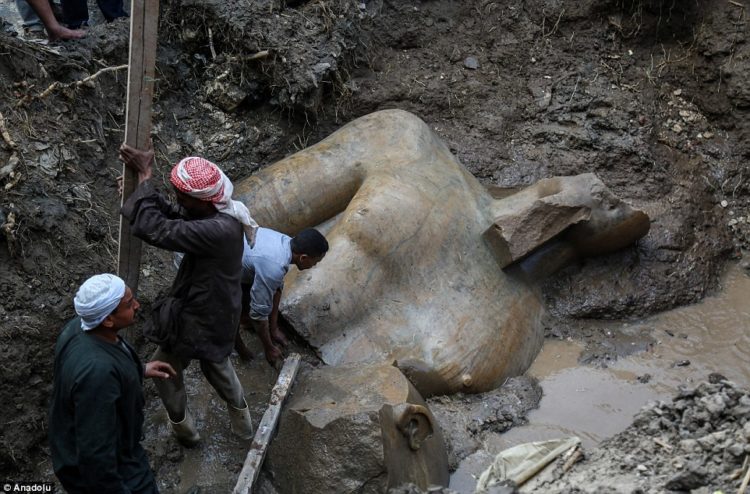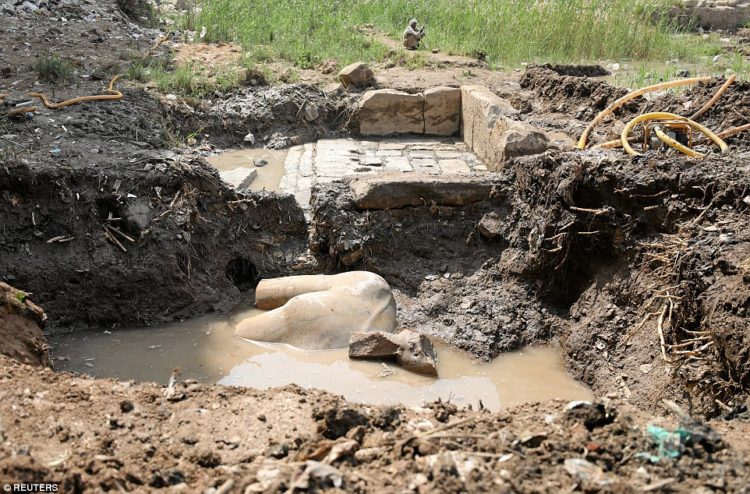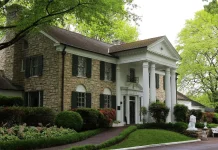Garman and Egyptian archaeologists found a giant 3000-year-old statue of Pharaoh Ramses II submerged in ground water in Cairo slum, which is hailed as “one of the most important discoveries ever”. It is believed, that it possibly depicts the revered Pharaoh Ramses II, who ruled Egypt more than 3,000 years ago.
The discovery was made near the ruins of Ramses II temple in the ancient city of Heliopolis, located in the eastern part of modern-day Cairo. The big colossus of the king, perhaps made out of quartzite, was once the most powerful and cruel ruler of ancient Egypt.
Moreover, his successors as the “Great Ancestor”, led several military expeditions and stretched the Egyptian Empire from Syria in the east to Nubia in the south. He was the 3rd pharaoh of the Nineteenth Dynasty of Egypt and ruled from 1279 to 1213 BCE. The discovery found a bust of the statue, the lower part of the head, the crown and the right ear, and a fragment of the right eye. The forklift helped to pull the statue’s head out of the water.
The site was once the ancient capital of Heliopolis – found two 3000-year-old pharaonic statues 26ft tall and carved out of quartzite a hard stone composed mainly of quartz. The engraving was found at the entrance to the temple of King Ramses II – also recognized as Ramses the Great.
However, another discovery found is a limestone statue of 12th century BC ruler King Seti II. The giant two statues shows the importance of the city of Heliopolis, which was dedicated to the worship of Ra. It was one of the largest temples in Egypt, almost double the size of Luxor’s Karnak, but was destroyed in Greco-Roman times.
The fame of Rameses II, the third king of the 19th dynasty of Ancient Egypt, is put down to his flair for self-publicity. Rameses II lived to about 90 and was actually buried in the Valley of the Kings but his mummy, which has the face of an old man with a long, narrow face, conspicuous nose, and big jaw, was moved to the nearby Deir el-Bahari to thwart looters.
Still, with its hair, some skin, and teeth it was rediscovered in 1881 and is kept in Cairo’s Egyptian Museum. The sun temple in Heliopolis was founded by Ramses II, which increases the likelihood the statue is of him, however, was destroyed in Greco-Roman times. Many of its obelisks were moved to Alexandria or to Europe and stones from the site were looted and used for building as Cairo developed.
The new discovery may be a boon for Egypt’s tourism industry, which has suffered many setbacks since the uprising that toppled autocrat Hosni Mubarak in 2011 but remains a vital source of foreign currency.
Source: Dailymail
